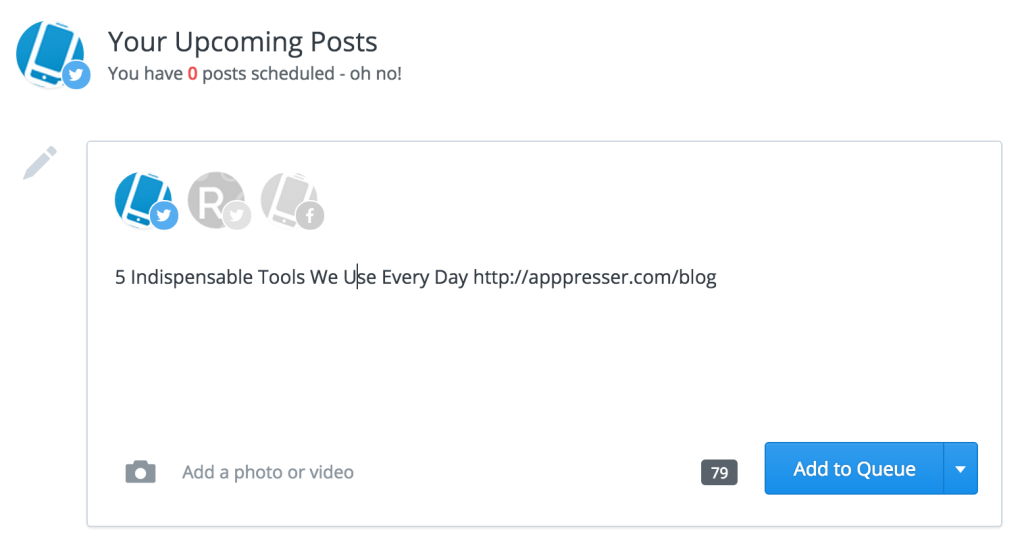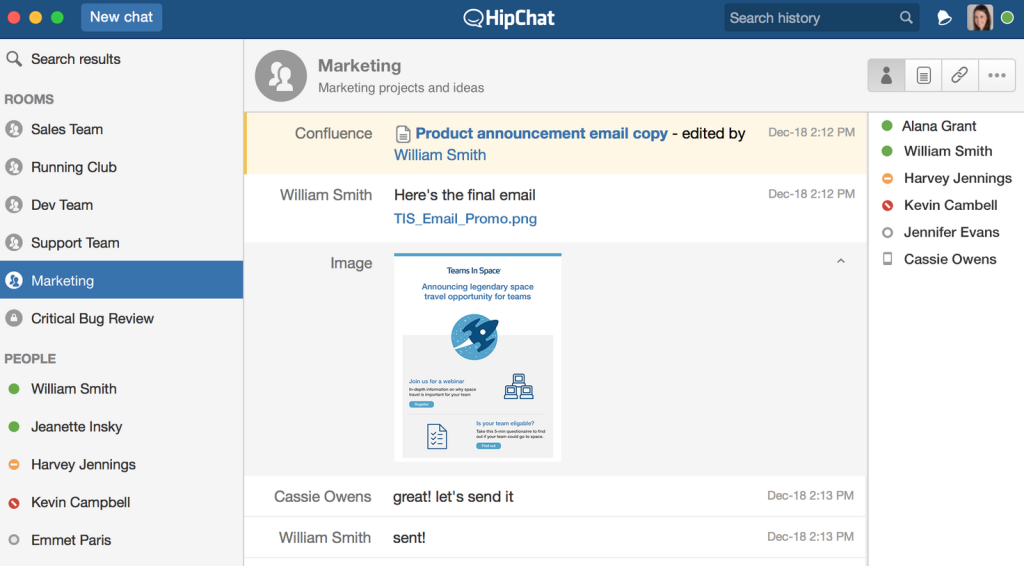Running a business is a lot of work.
There are a lot of tasks that can be really time consuming, using tools is a great way to automate and save time. Some tools take an initial investment of time and energy, but it pays off once you start using it consistently. Nothing is right for everyone, we’ve certainly tried to use some popular tools that just never worked for us.
Hopefully this list helps you, we’d love to hear what tools you use and love as well.
1. Social Media: Buffer

Finding great content and posting it to social media is a great way to keep your audience engaged. We use Buffer to schedule social media posts, and gather analytics. Here’s why.
There are 2 rookie mistakes I made that you should avoid. The first is only posting your own stuff, the second is posting it all manually.
If you just post your own stuff, it may look too self-serving. By posting other people’s content, they will be more inclined to share your content. Not only that, but just sharing great content in general is useful to your audience, and it makes you look good.
Posting everything manually is just too time-consuming, and there’s no way you will be able to post as much as you should (at least on Twitter).
Buffer allows you to schedule your posts in advance, and set how many times per day you want to post. It also allows you to consolidate all of your social media accounts, so you can post to them all at the same time. It gathers analytics on how many people engaged with your posts, so you can see what type of content your audience is identifying with.
Bonus: One issue that I always have is finding enough content to consistently keep my Buffer topped up. Feedly is a great tool to gather all your favorite blogs in one place, than you can post to Buffer from there.
2. Team Communication: HipChat

Our team is 100% remotely distributed across several cities and time-zones.
It’s absolutely essential that we have a communication tool that allows us to keep in touch all day long, without using the phone. You may think of Skype for this, and while it’s useful for some communication, it doesn’t work well for groups of people. Instead, we use HipChat.
HipChat allows us to have private group conversations, receive notifications, send files back and forth, and most importantly post hilarious gifs.
HipChat (or any communication tool) can get distracting if you let it. Sometimes notifications get out of control, and you can’t get anything done. It’s a good idea to adjust your notification settings, or just turn it off once in a while.
Another great tool for this is Slack, which many people also use.
3. Task Management: Trello
I’ve used a few different task management systems, and the only one that stuck was Trello.
It serves as a todo list for project tasks, and also a place to keep ideas. Its features are fairly limited, which is good and bad. Good because it’s simple, bad because it might not do everything you want it to do. I like the simplicity.
In Trello, we have 4 main lists for each project. For example, the AppPresser board has Todo, Doing, Done, and Wontfix. Tasks get added to Todo, then moved along accordingly. Team members can post comments, upload files, and collaborate on tasks. A rejected task is either moved to Wontfix or archived.
I recently added an Ideas board for brainstorming, although most of my raw ideas get written down in Evernote. Trello can get messy if you don’t keep up with it, someone needs to be in there everyday or it becomes obsolete.
I find the best task management system is the one that people will actually use, in our case it’s Trello.
4. Support: Help Scout
Support can be an unwieldy beast, but Help Scout helps us keep our sanity.
It’s basically just an email inbox that allows for collaboration. Emails sent to support@apppresser.com go into Help Scout, and our support agents can reply, assign, add notes, etc.
The beauty of Help Scout is in its simplicity. I’ve used other systems like ZenDesk, but something like that is just too much for my business. Help Scout feels like normal email to the support agent and to the customer, there is no customer login or complex interface to learn.
Integrating with Help Scout Docs works great, you can easily search your docs and include a link in your support email automatically. They also have saved replies which are always useful.
Bonus: If you use Easy Digital Downloads, you can get customer purchase information to show up in your Help Scout tickets using this custom app.
5. Code Collaboration: Git/Beanstalk
Code Collaboration is the backbone of any software company, and git is the go-to these days.
Beanstalk is a cloud service that hosts your code, and allows for easy collaboration and deployment. It’s similar to Github, except that it allows for more privacy. It also handles deployments, which means that it can send your code to a web server automatically.
We have an auto-deployment setup to a staging server, and a separate manual deployment setup for production. It’s easy to do with Beanstalk, along with managing team members, permissions, versioning, and more.
A free alternative to Beanstalk is Github, although it doesn’t handle private repos or deployments for free.
That does it for our favorite tools, what do you use and love?